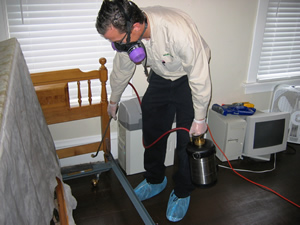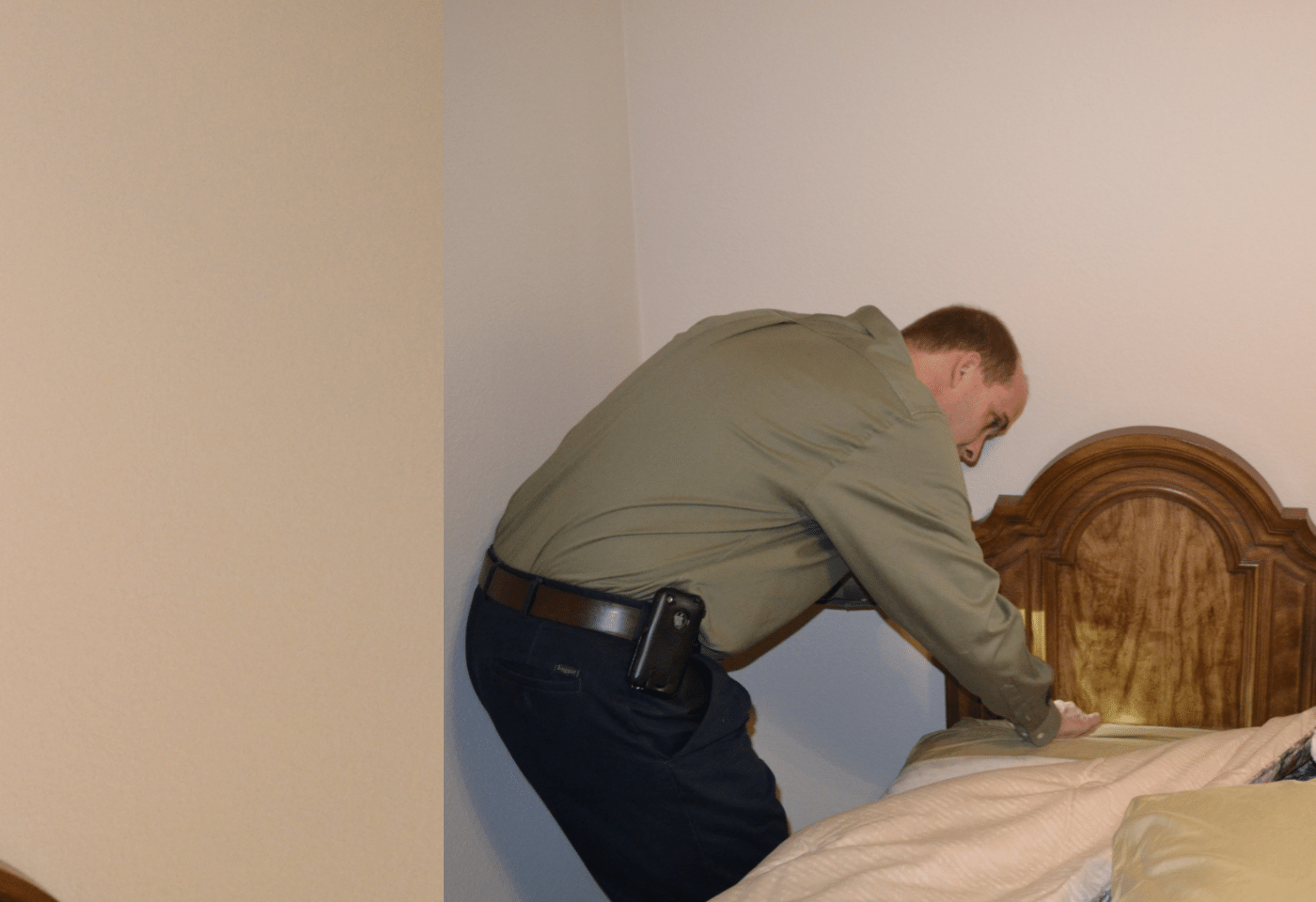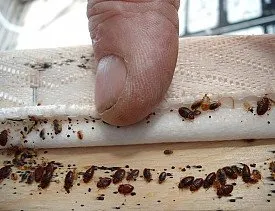Pest Control Solutions Demystified: The Scientific Research Behind Removing Pests and Bugs
Insect control solutions play an essential duty in keeping the health and wellness of our living and workplace. Behind the apparently regular job of removing insects lies a fascinating world of scientific concepts and methods that drive the process of pest monitoring. From understanding the intricate behavior patterns of pests to using sophisticated modern technologies for their elimination, the realm of insect control operates a structure of understanding that prolongs far past just eradicating undesirable burglars. As we check out the intricate scientific research behind bug elimination, we reveal a world where chemistry, biology, and modern technology converge to battle these durable adversaries.
Insect Behavior Evaluation
Analyzing parasite behavior is vital in developing efficient parasite control strategies for both property and business setups. By understanding the practices and patterns of bugs, parasite control professionals can execute targeted and effective remedies to eradicate invasions. One crucial facet of parasite behavior analysis is identifying the particular aspects that bring in parasites to a particular area. This could include access to food sources, water, shelter, or beneficial ecological problems. Some pests are attracted to locations with high dampness degrees, while others are brought in to waste or natural issue.
Furthermore, researching bug habits helps in determining one of the most suitable methods of parasite control. Various insects may call for different approaches, such as trapping, baiting, or chemical treatments. For example, recognizing that a specific type of parasite is mainly active at evening can help in organizing treatments for optimum efficiency. Generally, an extensive analysis of bug behavior is necessary for developing tailored pest management strategies that are both highly effective and environmentally friendly.
Integrated Parasite Management Techniques
Integrated Bug Management Strategies include comprehensive methods that utilize a mix of precautionary measures, organic controls, and monitoring to properly handle parasite populations. Surveillance plays a vital role in Integrated Bug Management by consistently examining and recognizing pest populations to establish the most suitable control approaches. By using a combination of these strategies, insect control solutions can minimize the environmental influence of pest administration while effectively decreasing pest populaces in a sustainable way.
Eco-Friendly Bug Control Solutions
With a focus on sustainability and environmental awareness, environmentally friendly parasite control solutions provide a effective and natural choice to conventional chemical pesticides. These techniques focus on using non-toxic components obtained from plants, minerals, or various other natural sources to fight insect invasions without creating injury to the environment, humans, or non-targeted types.
One prominent green strategy is biological pest control, which involves introducing natural predators, parasites, or pathogens to handle insect populations. By taking advantage of the power of nature's very own checks and equilibriums, this technique fly control can successfully regulate parasites without the demand for unsafe chemicals. Additionally, botanical chemicals acquired from plants like garlic, pyrethrum, and neem have actually revealed pledge in driving away or eliminating bugs while staying risk-free for advantageous pests and animals.
Furthermore, environment-friendly insect control services typically concentrate on preventive measures such as securing entrance points, getting rid of food and water resources, and preserving proper hygiene to hinder bugs from infesting buildings. By incorporating these lasting practices, pest control solutions can efficiently eliminate parasites while lessening environmental influence.

Function of Innovation in Bug Elimination
Modern improvements in modern technology have actually changed the field of bug elimination, improving the effectiveness and effectiveness of pest control solutions. The assimilation of modern technology in bug administration has significantly boosted the precision of bug detection, allowing for targeted therapy methods. One of the key technical devices in insect control is making use of remote surveillance gadgets, such as cams and sensors, which help in identifying parasite hotspots and tracking pest activities. These gadgets provide real-time information, allowing pest control specialists to make educated choices swiftly.
Furthermore, the advancement of environment-friendly chemicals and baits that are much more targeted in the direction of details pests has actually been enabled through technological find here developments. This targeted technique minimizes the total use chemicals, decreasing environmental impact while effectively managing pest populations. Additionally, the use of drones for aerial surveys and targeted pesticide application in hard-to-reach areas has streamlined pest control procedures.

Relevance of Regular Bug Inspections
Normal pest evaluations are vital for maintaining a pest-free atmosphere and stopping problems from holding - philly pest control philadelphia bed bugs. By conducting routine evaluations, homeowner can spot insect issues early, enabling for swift and targeted treatments to remove the pests before they spread out and reproduce. These examinations give a possibility to determine prospective entry factors where pests can infiltrate the premises, allowing positive procedures to seal these gain access to points and stop future problems
Furthermore, routine insect evaluations can help safeguard the health and safety and security of owners by making sure that the atmosphere remains without disease-carrying parasites and irritants. Early detection of parasites like rats, cockroaches, or bed pests can stop health and wellness risks related to their existence, such as allergic reactions, contamination of food and water sources, or the transmission of diseases.
In enhancement to safeguarding human health, normal insect inspections are crucial for protecting the structural stability of buildings. Specific pests, such as termites, can create considerable damages to wooden frameworks if left unattended. Via routine examinations, homeowner can recognize termite infestations early and carry out measures to stop costly architectural repairs.
Final Thought

Analyzing bug behavior is important in creating effective bug control approaches for both business and domestic setups.Integrated Parasite Management Methods include thorough strategies that use a mix of preventative measures, biological controls, and keeping an eye on to properly manage pest populations. By utilizing a mix of these strategies, parasite control solutions can minimize the environmental effect of insect administration while properly decreasing pest populations in a sustainable manner.
One of the key technological tools in insect control is the use of remote monitoring gadgets, such as sensors and video cameras, which assist in determining insect hotspots and tracking insect motions (philly exterminator philadelphia pa bed bugs).In final thought, comprehending insect behavior, implementing incorporated parasite administration methods, utilizing eco-friendly remedies, including innovation, and conducting regular examinations are necessary elements in effectively removing bugs